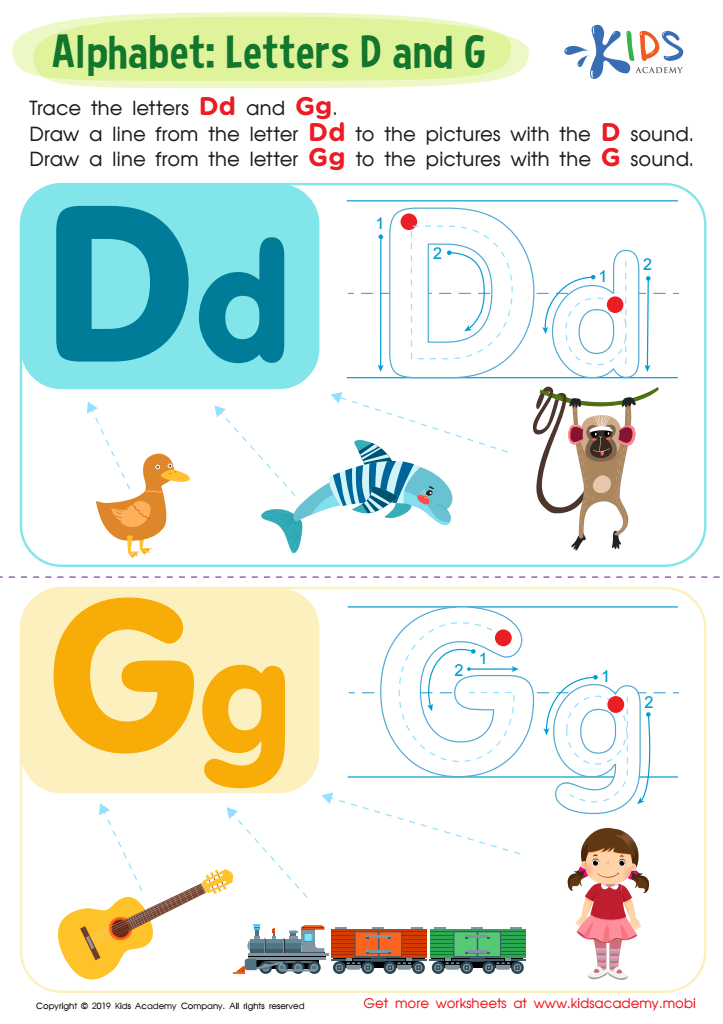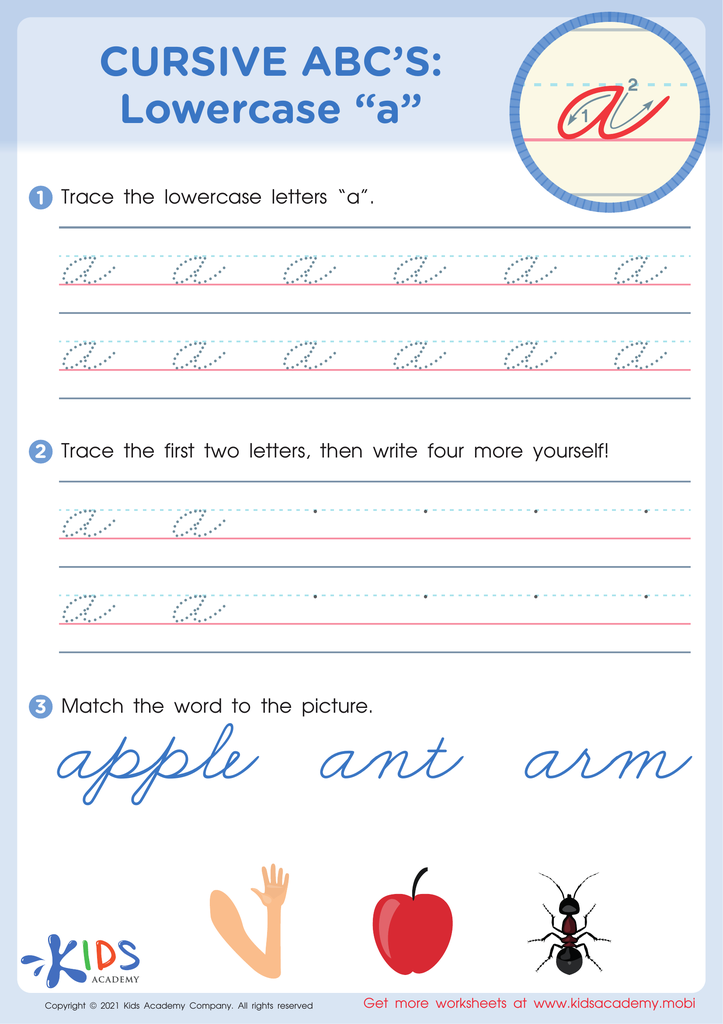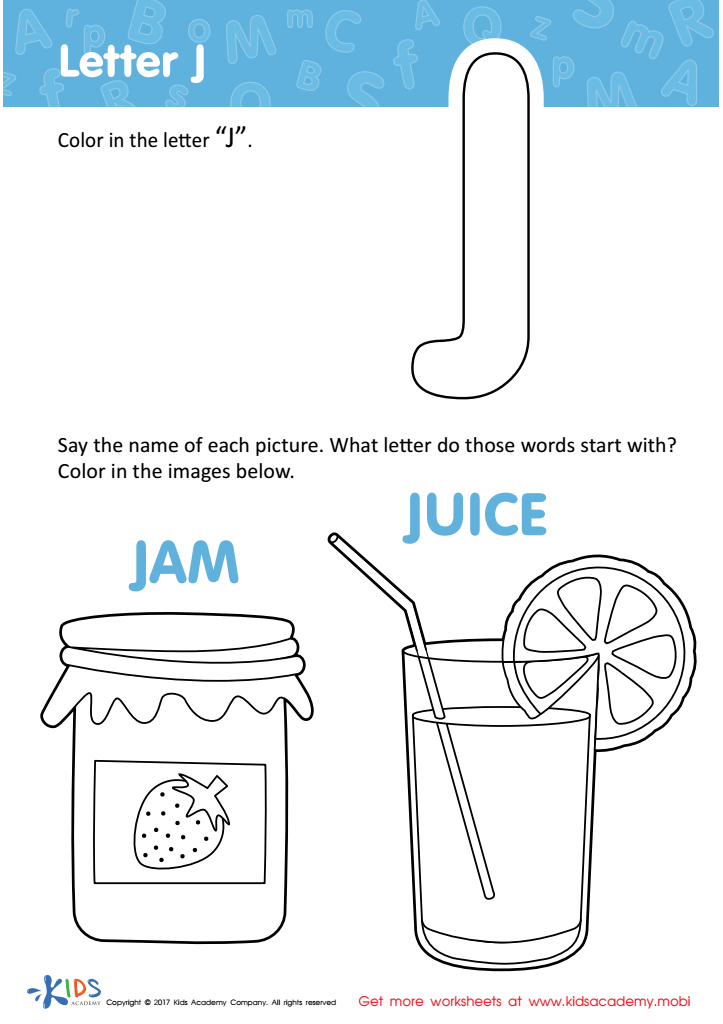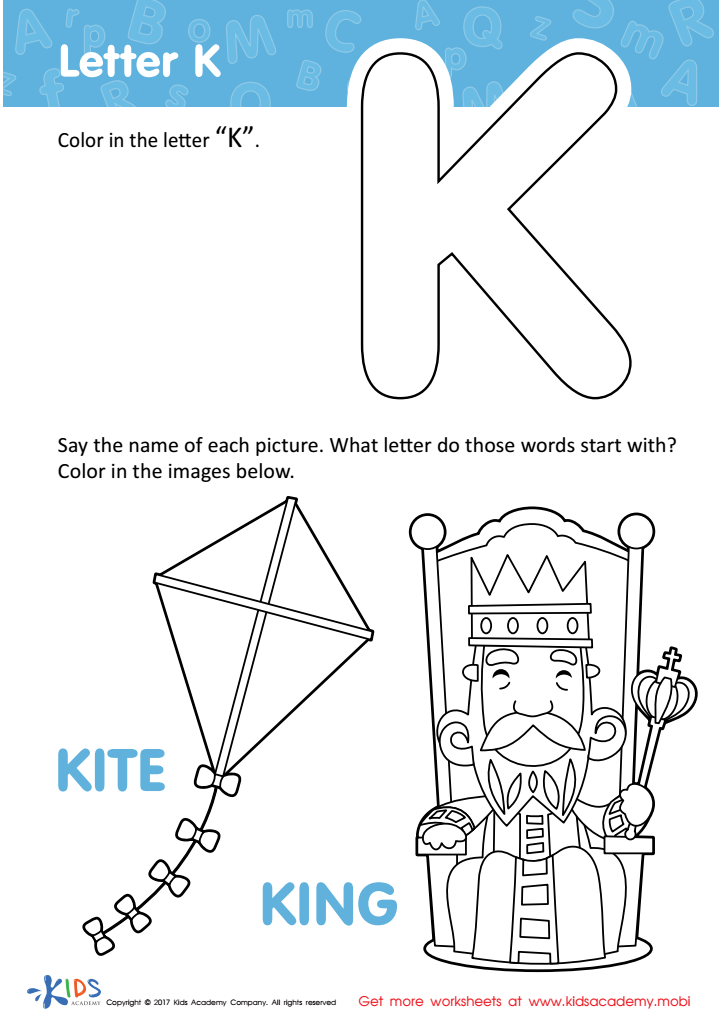Alphabetical order understanding Alphabet Worksheets for Ages 4-9
6 filtered results
-
From - To
Enhance your child's understanding of alphabetical order with our engaging Alphabet Worksheets tailored for ages 4-9! These thoughtfully designed resources help young learners grasp the concept of arranging words and letters in their correct sequence. Featuring fun exercises, colorful illustrations, and interactive activities, our worksheets encourage children to practice sorting letters, identifying sequences, and exploring the art of alphabetical organization. Perfect for parents and educators alike, these materials support early literacy skills in a playful yet educational manner. Download now to empower your child’s reading and writing capabilities while laying a strong foundation for their future academic success!


Letter P Sound Worksheet


Letter D and G Tracing Worksheet


Cursive ABCs: Lowercase a


Letter G Tracing Page


Letter J Coloring Sheet


Letter K Coloring Sheet
Understanding alphabetical order is a foundational skill for children aged 4-9, and it's crucial for several reasons. First, it enhances reading and writing abilities. When children can recognize and organize letters in order, their reading fluency improves, making it easier for them to recognize words and understand their meanings. This skill also aids in developing spelling proficiency as children learn to arrange words alphabetically, which reinforces letter recognition and phonetics.
Moreover, mastering alphabetical order supports organizational skills. In school and everyday life, children will often need to locate information quickly, whether it’s finding a book in the library, retrieving a document, or navigating digital resources. By instilling this understanding at an early age, parents and teachers equip children with essential skills adaptable for future academic and life tasks.
Additionally, the exercise of sequencing letters promotes cognitive development. It encourages logical thinking and problem-solving skills as children learn to categorize and sort information systematically. Therefore, prioritizing the understanding of alphabetical order in early education enriches academic foundations while fostering critical thinking, making it a valuable focus for both parents and teachers.

 Assign to My Students
Assign to My Students















